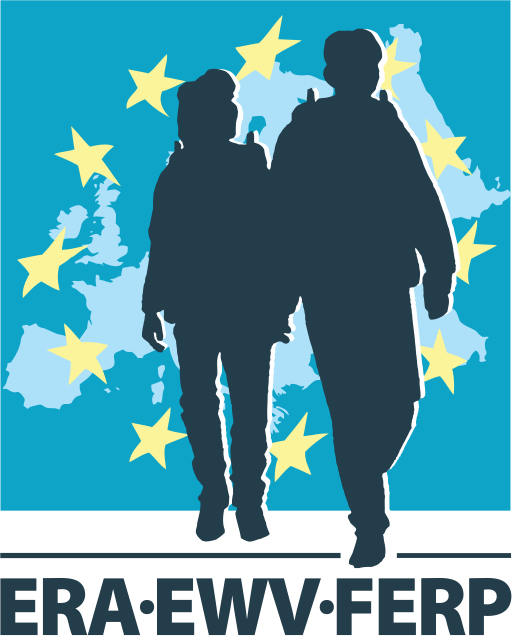top photo: Mikaela Videll
Introduction
The European Green Deal has relevance to the challenges and goals associated with outdoor tourism in Europe. The Green Deal is a comprehensive roadmap and set of policy initiatives introduced by the European Union (EU) to address climate change, promote sustainability, and transition to a greener economy. By aligning our activities with the objectives and principles of the European Green Deal, ERA can enhance our role in promoting sustainable outdoor tourism and contribute to the broader sustainability goals set by the EU.

At the core of ERA’s mission is the advocacy for sustainable practices in outdoor tourism.
ERA’s commitment to sustainable trail development offers hikers unparalleled opportunities to immerse themselves in the continent’s most stunning natural wonders.
Outdoor tourism in Europe is a popular and growing trend. Many travellers are drawn to Europe’s diverse landscapes, rich cultural heritage, and opportunities for outdoor activities.
Europe offers a wide range of outdoor tourism opportunities, including hiking, cycling, skiing, wildlife watching, and adventure sports.

Explanation
There has also been an increasing interest in sustainable and eco-friendly tourism, which often involves outdoor activities. Travelers are seeking experiences that allow them to connect with nature, reduce their environmental impact, and support local communities.
While outdoor tourism brings numerous benefits, such as economic growth, cultural exchange, and appreciation of nature, it can also pose certain challenges.
Here are some problems associated with the increasing outdoor tourism:
1. Environmental Impact: The influx of tourists can put strain on fragile ecosystems and natural resources. Activities like hiking, camping, and off-road driving can lead to habitat degradation, soil erosion, pollution, and disturbance of wildlife.
2. Overcrowding: Popular outdoor destinations can become overcrowded, especially during peak seasons, leading to congestion, long queues, and a diminished visitor experience. Overcrowding can also lead to increased noise levels, littering, and conflicts between tourists and local communities.
3. Infrastructure Strain: Rapid increases in tourism can strain the existing infrastructure, including transportation systems, accommodations, and facilities like restrooms and waste management. Insufficient infrastructure can lead to inadequate services and a decline in the overall visitor experience.
4. Cultural Impacts: Unmanaged tourism growth can lead to the commodification of local cultures, erosion of traditional practices, and loss of authenticity. Local communities may face challenges such as increased living costs, changes in traditional occupations, and conflicts over resources.
5. Overtourism: Certain popular destinations may suffer from overtourism, where the sheer volume of visitors overwhelms the carrying capacity of the area. This can lead to increased prices, degradation of local infrastructure, and a negative impact on the quality of life for residents.
6. Unsustainable Practices: Some tourists may engage in unsustainable practices, such as leaving waste behind, damaging flora and fauna, or engaging in illegal activities. Lack of awareness and irresponsible behavior can have long-lasting negative effects on the environment and local communities.

Conclusion
ERA recognizes that no single organization can tackle the challenges of sustainable outdoor tourism alone. By fostering collaboration and partnerships, the association would like to bring together member organisations, tourism organizations, environmental groups, and government bodies. Through shared expertise and resources, ERA maximizes its impact, contributing to the development of cohesive and sustainable tourism policies and initiatives throughout Europe.
ERA can establish trail guidelines and certification programs that encourage sustainable trail development and management. These guidelines can cover aspects such as trail design, signage, erosion control, waste management, and safety measures. Certification programs can recognize and promote trails that adhere to sustainable practices, providing hikers with assurance of responsible and well-maintained routes.
This is WHY ERA wants to implement the ERA Green Trails certification.
These criteria can serve as a foundation for a certification system:
Environmental Sustainability; Cultural and Heritage Preservation; Safety and Accessibility; Responsible Visitor Behaviour and Community Engagement and Economic Impact.
The certification system developed by ERA could involve a rating or labelling system that indicates the level of adherence to these criteria for each trail.
Trails that meet a predefined set of standards could be awarded a certification or label from ERA, indicating their commitment to sustainable hiking and responsible outdoor tourism.
The certification process may involve self-assessment by trail managers, site inspections by ERA representatives, and periodic evaluations to ensure ongoing compliance.
ERA CALLS
ERA intend to hold a webinar on 22 November 2023 from 17:00 CET to inform and discuss the ideas and possible Way Ahead of ERA GREEN TRAILS.
Please sign up to the webinar HERE to hear more about the criteria and levels of the certification system and to discuss the ideas.
WE WANT TO DISCUSS WITH YOU AND HEAR YOUR VOICE!

